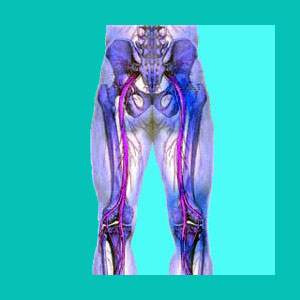
Sciatica is a very misunderstood lower back, buttocks, leg and foot pain syndrome. In fact, sciatic nerve pain is not actually a condition at all, but rather a symptom of another underlying causative source. In essence, sciatic pain occurs due to another structural or psychosomatic condition, not simply as an independent disorder.
This article will profile one of the most enigmatic and difficult to resolve dorsalgia conditions known to mankind: sciatic nerve pain. We will discuss the causes, symptoms and reasons why lower body radiculopathy sufferings are so stubborn to resolve.
Sciatica Explained
Sciatic nerve pain describes neurological symptoms which occur in the lower back, buttocks, legs and feet. The most typical of these symptoms include pain, tingling, weakness and numbness. Sciatic nerve symptoms can be very diverse and are guaranteed to affect each patient in a unique pattern. Some patients endure tremendous pain, while others put up with merely annoying sciatic expressions.
Many patients deal with considerable lower back pain, while other patients report the worst of their symptoms in the lower extremities. Some have unilateral symptoms, while others suffer bilaterally. Various patients might report burning pain, shooting pain, radiating pain, sudden pain, intermittent pain or activity-related pain as part of their sciatic nerve misery.
One thing is common to all sciatic conditions: They make life a living hell and can be extremely debilitating when the symptoms are at their worst. This I surely know from decades of personal experience spent suffering with the condition.
Sources of Sciatic Nerve Symptoms
Sciatic nerve pain can exist from a wide range of potential causations. Ischemic sciatic pain is extremely common, since even low levels of oxygen deprivation can create significant symptoms in the back, buttocks, legs and feet.
Spinal stenosis can create sciatic nerve pain and related symptoms when it occurs in the lumbar spine. Foraminal stenosis can pinch off nerve roots which tie into the sciatic nerve, causing symptoms in rare instances.
Of course, herniated discs can also be responsible for sciatic symptoms in patients who demonstrate particular disc pain profiles which cause either central or foraminal narrowing.
Sciatic Nerve Pain and Herniated Discs
Although most herniated discs are not symptomatic and will never cause pain or other symptoms, some can create real problems in the spinal anatomy.
A herniated disc might compress a spinal nerve root, which will eventually meet up with the sciatic nerve. This condition is actually a form of foraminal stenosis, but the underlying cause is compression due to the herniation blocking the neuroforamen opening.
A herniated disc can also very rarely create a central stenosis condition on the actual spinal cord or cauda equina. When this occurs to a mild degree, sciatic nerve pain might ensue. When this effect is significant in the lumbar spine, cauda equina syndrome is a possible result.
Sciatica Recovery Advice
In all my years of studying chronic pain, sciatic nerve conditions have always presented themselves as the most puzzling, treatment-resistant and sometimes completely illogical of all back pain syndromes. Sciatic pain is very difficult to accurately diagnose in most patients and even more tricky to treat effectively. It is no surprise that many patients who can not find relief from a variety of treatment options are actually misdiagnosed and typically suffering from either a completely undiscovered structural issues elsewhere in the spine or a simple ischemic process. Remember, ischemia affects nerve tissue more than any other type of cell. Nerves are the first to feel the effects of oxygen deprivation and symptoms will begin almost immediately.
I always recommend patients consider investigating knowledge therapy as an alternative approach for mindbody pain syndromes. I love to hear how well it worked compared to all the physical medical modalities which fail miserably. Being that this treatment has no costs and no risks, there is truly nothing to lose by considering it.
My nerve pain had a million different faces. It changed regularly and affected me in so many ways for decades. I suffered some times of intense back pain and only minor symptoms in my legs, while other times I could barely stand, sit or walk due to the intense leg pain in my thighs, calves and groin. Worst of all was the lowest back pain which felt like a stabbing hot knife being stuck into my spine, just above my tailbone. It was torture! If you are suffering with similar pain conditions, be sure to learn all about the particulars of your diagnosis. Remember, sciatica is a symptom-set, not a diagnosis unto itself, so you must ask your doctor questions and receive answers which make sense to you. For detailed information on sciatic nerve pain, please visit The Sciatica Authority on The Cure Back Pain Network.





